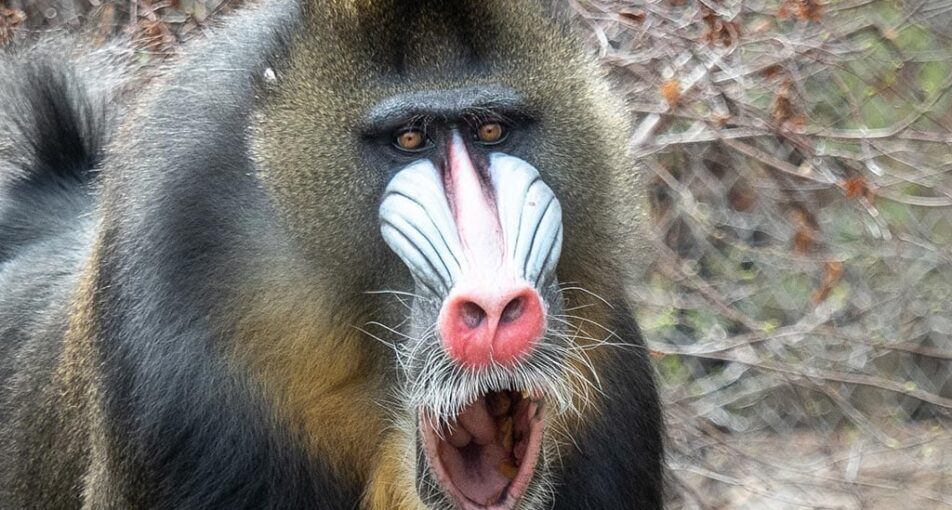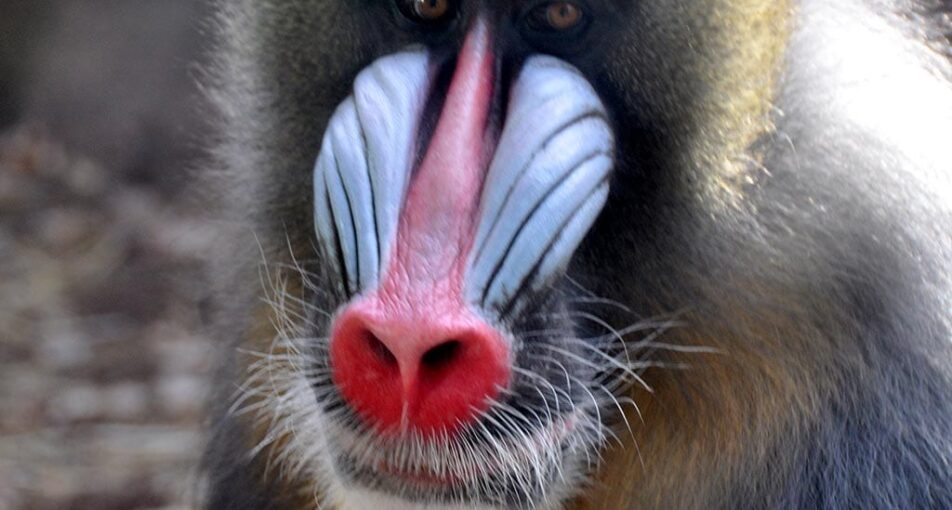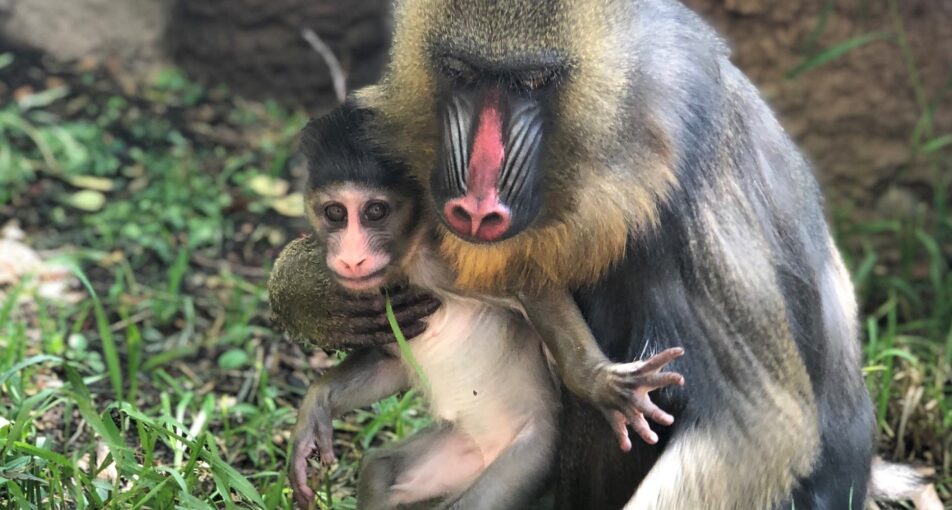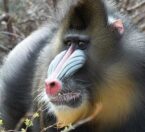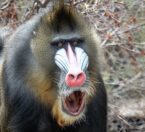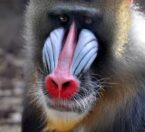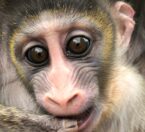Mandrills have large cheek pouches that open beside their lower teeth and extend down the sides of their neck. These pouches can contain nearly a full stomach load of food when fully distended. When competing for food or foraging in a dangerous place, mandrills can quickly cram food into the cheek pouches then retreat to a safe place to eat. They use the back of their hand to push food out of the pouches and into their mouth.
Classification
| CLASS: | Mammalia |
| ORDER: | Primate |
| FAMILY: | Cercopithecidae |
| GENUS: | Mandrillus |
| SPECIES: | sphinx |
Habitat & Range
Mandrills are found primarily in rainforests, also forested savannah, and montane and thick secondary forests up to 6,571 ft. (2,000 meters).
They inhabit west central Africa, inhabiting Equatorial Guinea, Cameroon, and Congo, with the largest population in Gabon.
Location


Adaptations
- They are semi-terrestrial, foraging on the ground on all fours (quadrupedally) and climbing high up in trees to sleep and to find fruit or leaves.
- Opposable thumbs and big toes allow climbing, grasping and manipulating objects.
- Cheek pouches can hold a large amount of food while foraging to consume later.
- Thick pads on the rump support weight when sitting.
- Adult male mandrills are very colorful. The thick ridges along their noses are purple and blue. Their noses and lips are bright red and they have golden beards. These bright colors are thought to be attractive to females. But those bright colors also show up on the mandrills’ rear ends that may enhance visibility in thick vegetation as troops move through the forest. Their rumps range in color from deep reds to pinks to bright blues and lilac.
Physical Description
- They are sexually dimorphic – male mandrills are the largest of all Old World monkeys and are two to three times larger than females. An adult male average weight is between 70 – 119 lbs. (32 – 54 kg); an adult female’s average weight is 27 lbs. (12 kg).
- Average height for males is 32 inches (81 cm) and for females 22 inches (60 cm).
- Fur is dark brown to gray with lighter fur on the underside. A dark brown crest on crown of head.
- Face is mostly hairless and elongated with white whiskers and a yellow beard. A red stripe down the middle of the face, thick blue ridges along the nose, and nostrils and lips red. Adult male coloration is much brighter than females and juveniles. The more testosterone in a male, the brighter his coloration.
- The rump is bare, and is brightly colored like the face in males. Tail is stubby and held upright.
- The body is strong and compact with long arms.
- Extremely long canine teeth, up to 2 1/2 inches (5 cm) in males, are displayed for self-defense, intimidation, and as a friendly gesture.
- Forward facing eyes provide binocular vision for judging distances in trees and for close-up actions while feeding and grooming.
Diet
What Does It Eat?
In the wild:
Mandrills are omnivorous. Their highly varied diet in the wild includes fruit, seeds, leaves, fungi, roots, tubers, insects, snails, worms, frogs, lizards, bird eggs and sometimes snakes and small vertebrates. They have been reported to take oil palm fruit from plantations and to raid farm crops when food is scarce.
At the zoo:
Mandrills are fed a variety of vegetables, greens, low-starch primate biscuits, fruit for training, konjac for gut health (a plant rich in soluble dietary fiber and low sugar diabetic gel (specially formulated for primates).
What Eats It?
Predators of the mandrill include leopards, crowned hawk-eagles, and snakes.
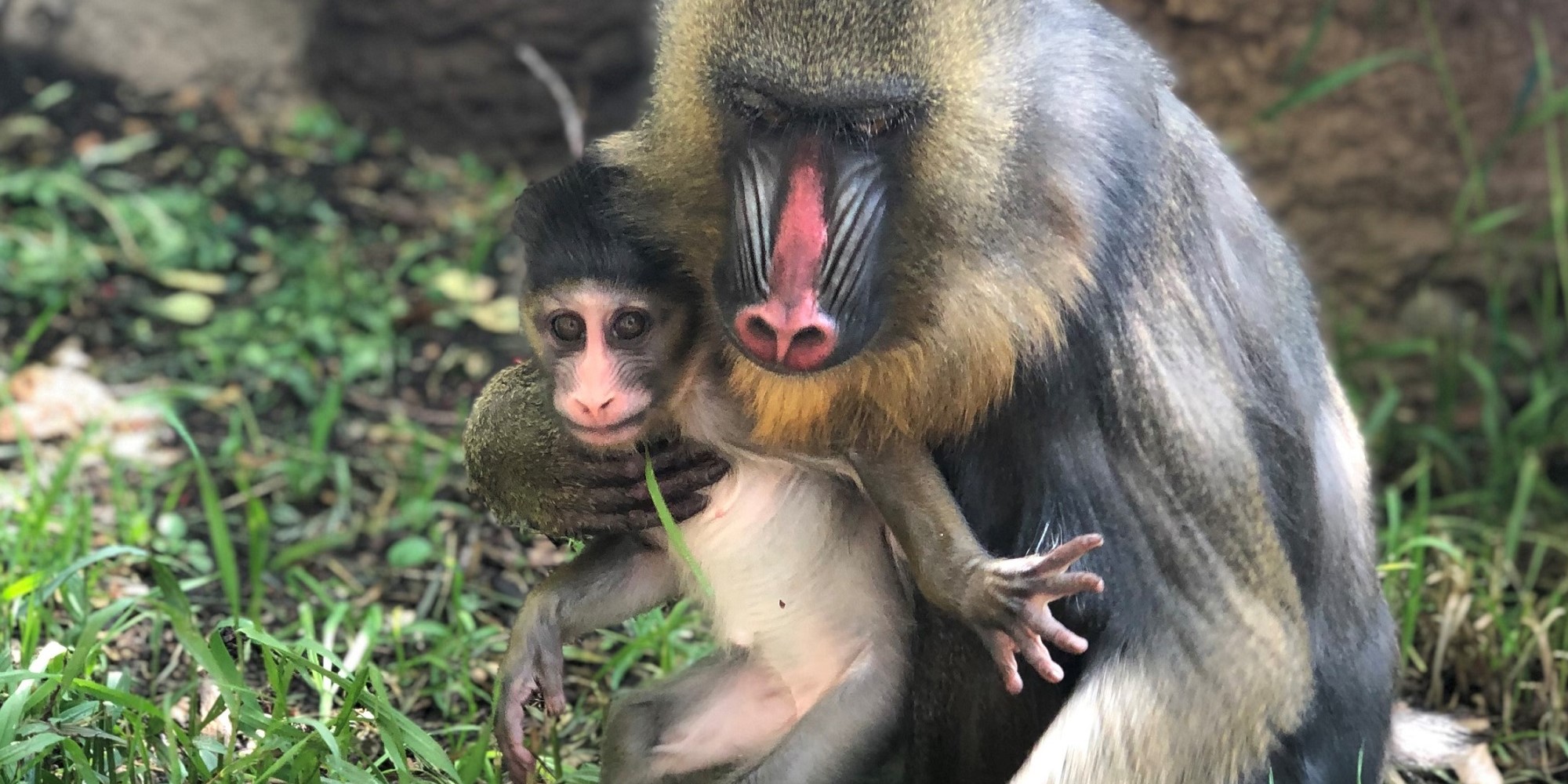
Social Organization
Mandrills live in hierarchical, harem-type societies. Family groups/troops of 10-30 consist of females, juvenile males and a dominant adult male. These groups are often part of larger groups of up to several hundred, called hordes. Bright coloration helps individuals see each other in dark, dense forest.
The large range of vocalizations, including chatter, howls and grunts, allow communication among individuals and groups. Body language is also central to communication such as yawning and slapping ground. Males communicate territory by scent marking; scent is produced by a gland in the chest area.
Females will stay with the natal group, while males will leave the group when mature.
Life Cycle
The average lifespan in the wild is 20 years and up to 40 years in managed care settings like zoos. Females mature between 4 and 7 years and males at about 9 years. Although, females choose mates with the brightest colors on face and rump, only the dominant male has mating rights. Breeding is seasonal over several months and gestation is about six months. Single births are the norm and infants are weaned by one year of age. Infants are carried clinging to their mother’s belly. Infants sport a black natal coat until about two months when it begins to change color. Only females care for the young, often with the participation of other females in the group.

